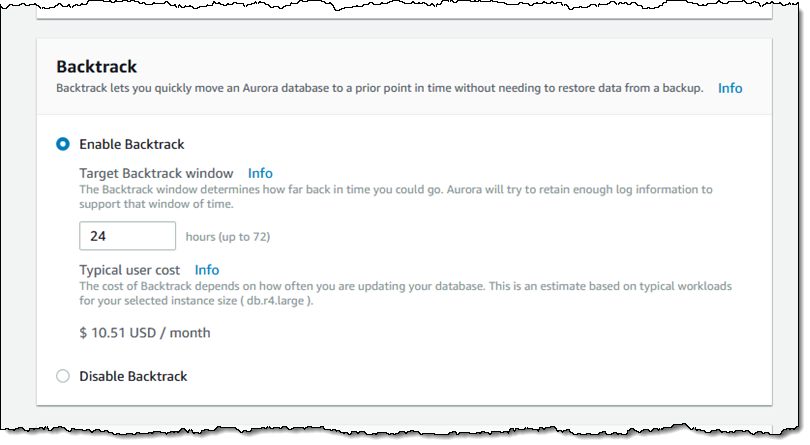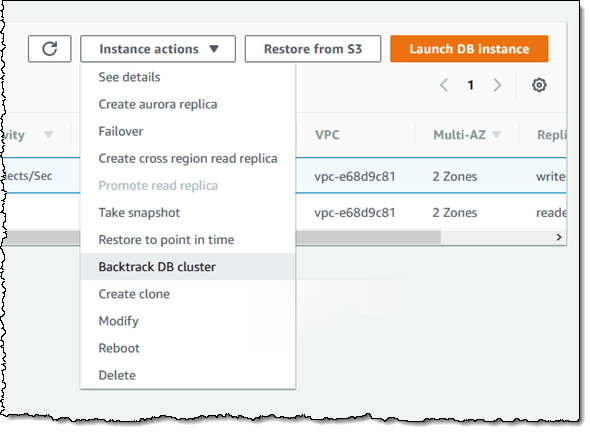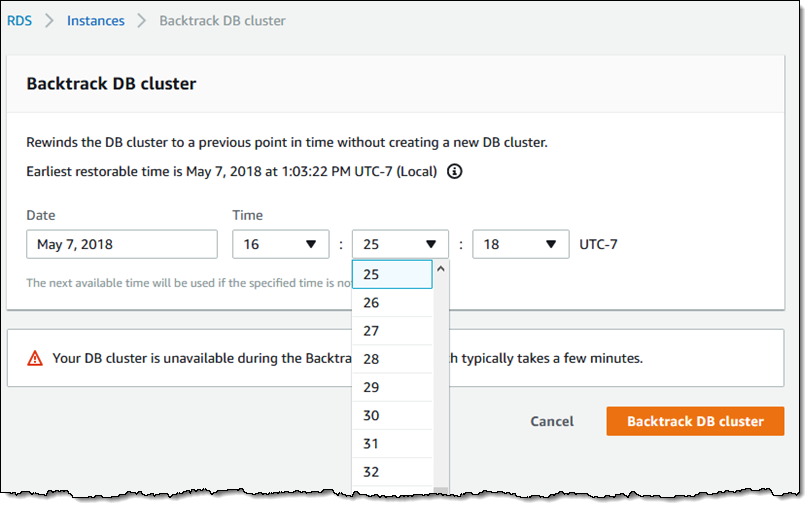AWS News Blog
Amazon Aurora Backtrack – Turn Back Time
|
|
We’ve all been there! You need to make a quick, seemingly simple fix to an important production database. You compose the query, give it a once-over, and let it run. Seconds later you realize that you forgot the WHERE clause, dropped the wrong table, or made another serious mistake, and interrupt the query, but the damage has been done. You take a deep breath, whistle through your teeth, wish that reality came with an Undo option. Now what?
New Amazon Aurora Backtrack
Today I would like to tell you about the new backtrack feature for Amazon Aurora. This is as close as we can come, given present-day technology, to an Undo option for reality.
This feature can be enabled at launch time for all newly-launched Aurora database clusters. To enable it, you simply specify how far back in time you might want to rewind, and use the database as usual (this is on the Configure advanced settings page):

Aurora uses a distributed, log-structured storage system (read Design Considerations for High Throughput Cloud-Native Relational Databases to learn a lot more); each change to your database generates a new log record, identified by a Log Sequence Number (LSN). Enabling the backtrack feature provisions a FIFO buffer in the cluster for storage of LSNs. This allows for quick access and recovery times measured in seconds.
After that regrettable moment when all seems lost, you simply pause your application, open up the Aurora Console, select the cluster, and click Backtrack DB cluster:

Then you select Backtrack and choose the point in time just before your epic fail, and click Backtrack DB cluster:

Then you wait for the rewind to take place, unpause your application and proceed as if nothing had happened. When you initiate a backtrack, Aurora will pause the database, close any open connections, drop uncommitted writes, and wait for the backtrack to complete. Then it will resume normal operation and be able to accept requests. The instance state will be backtracking while the rewind is underway:
![]()
The console will let you know when the backtrack is complete:

If it turns out that you went back a bit too far, you can backtrack to a later time. Other Aurora features such as cloning, backups, and restores continue to work on an instance that has been configured for backtrack.
I’m sure you can think of some creative and non-obvious use cases for this cool new feature. For example, you could use it to restore a test database after running a test that makes changes to the database. You can initiate the restoration from the API or the CLI, making it easy to integrate into your existing test framework.
Things to Know
This option applies to newly created MySQL-compatible Aurora database clusters and to MySQL-compatible clusters that have been restored from a backup. You must opt-in when you create or restore a cluster; you cannot enable it for a running cluster.
This feature is available now in all AWS Regions where Amazon Aurora runs, and you can start using it today.
— Jeff;
